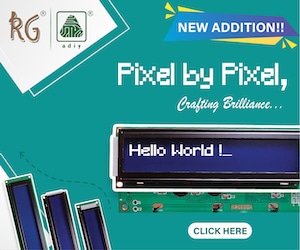Convergence of physical and virtual worlds has created new opportunities across industry segments. How have these sensors evolved? Krishnananda Shenoy, AVP and principal architect, engineering services, Infosys, speaks with Dilin Anand from EFY

Q. What broad advances are enabling new capabilities in sensors?
A. Extremely-small connected devices and machines have sensors attached that play a very active role in gathering data. Collected data can then be used to derive meaningful insights via analytics.
Sensors as a whole have undergone many architectural changes that have resulted in new capabilities for modern sensors. Advancements in micro-electro-mechanical systems (MEMS) and field-programmable gate array based sensors, systems on chip, efficiency algorithms of signal processing and other microcontroller advances have also contributed to new sensor capabilities.
Q. What is driving miniaturisation in sensors?
A. Numerous advances including those in material science and manufacturing technology drive miniaturisation of sensors, resulting in more reliable and predictable sensors. Adoption of MEMS has increased primarily due to advancement in technology related to the manufacturing process node. These have also helped in bringing down cost, triggering affordability and mass adoption of sensors into portable products, thus catalysing the Internet of Things revolution. It has also resulted in better reliability and accuracy of measurements.
Q. What factors are responsible for evolution in modern sensors?
A. Integrated connectivity and inbuilt processing capability are the prime ones. Wide choice of connectivity is now available based on the industry application that particular sensor was designed for. Sensors are now integrated with Ethernet, Wireless Mesh, Wi-Fi, ZigBee, Bluetooth and related technologies. These have been increasingly becoming smart and intelligent with integration of connectivity, better processing as well as better memory capabilities.
Q. What are the capabilities that modern sensors have enabled?
A. Higher processing power of modern sensors has enabled these to handle more complex signal processing. This is primarily of help to digitise analogue data that the sensor collects. More processing can now also be done on the sensor or right at the edge for better latency and real-time actions.
Sensors have helped in creating feedback loops between users, product development and design team and production people on the shop floor. Traditionally, this was not possible.
Q. Could you give an example of this feedback loop being of aid in a real-world use case?
A. An example could be where using predictive analytics, real-time asset information is collected efficiently and accurately and analytics run to make the right decisions in terms of operations, maintenance, over-haul and asset replacement.
Q. What is the impact of sensors in a non-industrial segment like wearables?
A. Acceptance of wearables across medical, mobile and digital health has driven a lot of innovation in their design and development. For example, wearables require ever smaller components, lower power consumption and an ever-increasing number of embedded features.
At the same time, MEMS sensors are getting integrated with multiple sensors such as an accelerometer or gyroscope. Sensor-fusion solutions are triggering better performance in wearables through embedded power management.
Q. What is driving R&D on next-generation sensors?
A. Need for sensor R&D has been triggered by multiple reasons. Energy harvesting is an important one due to its potential for better energy management by utilising the surroundings including motion, light or difference in temperature.
Another example is the use of technologies like LoRa for conserving sensor power. Network innovations such as evolution of software defined networking and deployment and adoption of IPV6, and mesh network for connectivity are some network innovations that are impacting sensors R&D.










